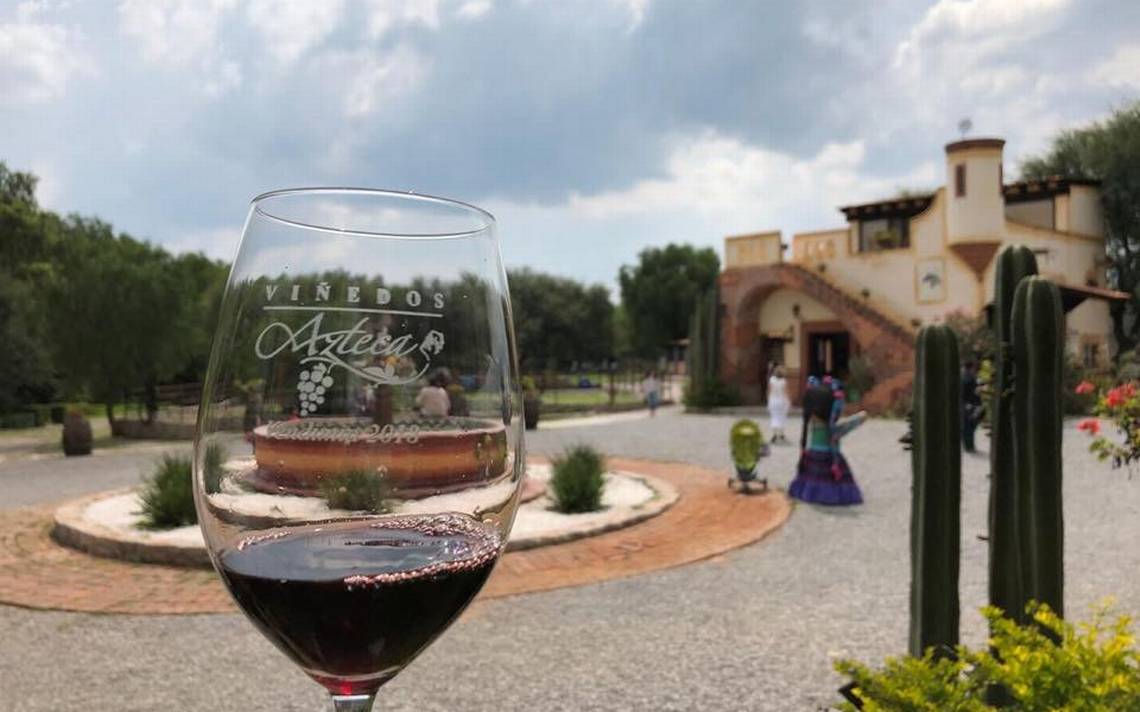Baja California still commands the industry, but other states also boast excellent wine routes
Each year, Mexico’s clout in the wine industry grows, with production and consumption increasing in the past few years. In each national and international contest where it is presented, Mexican wine is increasingly awarded medals of distinction.
But the accolades don’t end with just production: wine tourism in Mexico is also praised for its agricultural excellence, hospitality, culinary renown and cultural offerings. The breadth of experiences that visitors can find in wineries here have made this kind of tourism unforgettable, and Mexico’s wine trails across the country keep expanding.
The Baja California wine trail (linked page in Spanish) continues to be the most developed, with more than 100 vineyards that offer all kinds of activities and events. Within the larger route — which runs from Valle de Guadalupe to Valle de San Vicente — are various smaller ones where you can find well-established vineyards like Ojos Negros in Real de Castillo Nuevo and the Santo Tomás, Monte Xanic and Pedro Domecq vineyards in Ensenada. There are also boutique wineries that bottle small amounts of high-quality wine and receive guests with family hospitality.
At these wineries, you learn how their wines are made, taste a range of bottles and try food pairings. Some wineries also host music concerts, hot-air balloon rides, bike trips, horseback riding or tours on all-terrain vehicles. The Baron Balche vineyard in Ensenada and the La Escuelita and El Cielo vineyards, both in El Porvenir, also offer experiences for visitors, including resort stays at El Cielo.
The area is also known for its cuisine, with surf-and-turf options in the area’s best restaurants in the vineyards and nearby. The region is famous for its lobster, so lobster tacos should be on every visitor’s list.

Some of these wine trails are multi-day excursions, but there are plenty of excellent hotels to stay in along the way, including Hotel Burbuja in El Porvenir, where guests sleep inside see-through pods that provide a view of the starry night sky in Valle de Guadalupe, undoubtedly the most beautiful section of Baja’s wine country.
Vineyards also host special events throughout the year, such as Ensenada’s Festival de las Conchas y el Vino Nuevo in the first two weeks of April. If you love seafood, white wines and rosés, this is your party. Flying high on a zipline is a favorite guest activity, but best to do that before the tastings. For parents traveling with kids, there are plenty of safe, fun places for them to play while you tour the vineyards.
In the Santo Tomás valley, Bodega Santo Tomás’ Único wine was one of the first to win recognition for its quality at a time when most Mexican wines were still just mediocre. The winery is one of the largest and oldest vineyards in Mexico.
Moving southward, another important wine trail is the Bajío, in a region located in the states of Querétaro and Guanajuato in the center of Mexico. The father of the nation’s independence movement, the priest Miguel Hidalgo, had vineyards here.
Distinctly different from Baja, this wine route features colonial architecture, impressive aqueducts and mosaics that brighten the arid landscape, where wine production underwent a revolution in the 1980s and is now home to about 50 vineyards.
Among the more veteran vineyards in Querétaro is Ezquiel Montes’ Freixenet complex, the internationally known Catalan maker of sparkling wine, which has a winery here under the name Finca Sala Vivé. They host one of the most popular wine events in the country annually, the Festival de la Paella, a competition for experts and amateur paella makers.

Also in Ezquiel Montes is La Redonda, with a more than 40-year history of pleasing Mexican palates. Each year, it hosts a grape harvest festival with tours, outdoor concerts, fireworks, and hot-air balloon rides and horse and bicycle tours to round out the wine tasting experience. You can even take part in a traditional grape stomping.
The San Juanito winery in San José de la Laja is tinier by comparison but well-known for its monovarietals, i.e. wines made from a specific grape. Some distinguished varietals they produce include a malbec, a merlot and a tempranillo, a type of wine made from a Spanish variety of black grape.
The grape has so well adapted to growing in central Mexico that the vineyard is working to certify the wine produced from it as a designation of origin vintage to be called Tinta de Bernal, perhaps because of the vineyard’s marvelous view of the Peña de Bernal — said to be the world’s second largest natural monolith — which attracts climbers from far and wide.

Speaking of Peña de Bernal, the Museo de Queso and Vino, a cheese and wine museum, makes the nearby colonial and quaint Magical Town of Tequisquiapan worth a visit, where the monolith dominates your view just about everywhere.
Lovingly called Tequis by locals, this town, dotted with colorful homes, has plenty of nice hotels where you can enjoy a weekend of hiking and shopping and be close to all the area’s vineyards.
Boca de Lobos, in El Lobo, is one of Querétaro’s most recognized wineries, managed by a Spanish vintner making signature wines, different with each harvest.

The Cuna de Tierra vineyard in Guanajuato is unmissable and considered one of the best wineries in the country. It has a particularly famous and delicious nebbiolo.
Because of their proximity, Querétaro and Guanajuato could almost be considered part of the same wine trail, but they are definitely not the same experience. While Querétaro has had a head start in winemaking, Guanajuato’s wineries are gaining more ground every day. It is currently the third-largest wine production region in the country and has a lot going on in terms of wine tourism.
Revived festivals and competitions — such as September’s Guanajuato Spirits Competition in the state capital and the Concours Mondial de Bruxelles Mexico Selection coming up later this month in Mineral de Pozos, along with many other cultural events related to wine and spirits, are filling up this year’s calendar into 2022.
Tres Raices in Dolores Hidalgo is another interesting winery along this route, a beautiful modern vineyard surrounded by eye-catching sculptures. Its wine, after just a few years on the market, is being lauded for its quality and taste.
While Baja California’s vineyards are world-famous, other parts of northern Mexico shouldn’t be left off this list: in Coahuila you can find the oldest vineyard in the Americas, Casa Madero, in the ancient and beautifully decorated San Lorenzo hacienda.
Here they produce some of the most famous and award-winning wines in the country. Casa Madero also offers tours and overnight stays in the hacienda. Gardens, vineyards, good wine and food, and more than anything, lots of peace and tranquility await you here.

For years, Casa Madero was the only wine tourism stop in this part of the country, but a local wine trail is slowly being developed here. At the moment there are two routes, one in the desert and the other in the mountains.
This is wine tourism with an interesting twist, as it includes archaeology. One route, the Vinos y Dinos (Wine & Dinosaurs) route, takes you to see both wineries and prehistoric fossils. On this route, you can visit the Don Leo vineyards in Parras de la Fuente and the Bosques de Monterreal and the Los Cedros wineries, both in Arteaga. I also personally recommend Vinícola Rancho El Fortín in Saltillo where, in addition to great wine, you can dine on genuine Charolais beef. The combined ranch and winery was the first entity to bring Charolais cattle to Mexico from France in 1929.
Another important northern wine destination is Chihuahua, also a state with a bright future in wine production. Like much of wine country in Mexico, this area started off producing brandy and moved on to make great wines. Over 15 years 250 hectares of land for grape cultivation has been planted here, and there is plenty of room to grow due to the area’s sheer breadth of agricultural space.
With more than 20 active wineries, more than 10 offer visitor experiences, including Ciénega de Castilla in Cuauhtémoc, Molino Don Tomás in Santa Isabel, the Ruta Tres Ríos, the Vinícola Amelia and the Bodega Piñamora vineyards in the the capital, the Finca San Antonio y Saenz and, finally, the Vitivinicola Richesse vineyards in the municipality of Guerrero.
I have personally tasted several of the natural wines from Bodega Pinesque, also in Chihuahua, which has been fundamental in developing the winemaking industry in this state; its wines are delicious and of high quality. For more information, the organization Toma Vino de Chihuahua (Drink Chihuahuan Wine — linked page in Spanish) is a great source of information for first-timers about the region’s wine trails.
For the future, keep an eye out for other wine trails in the works in the states of Aguascalientes and Zacatecas. Cheers to Mexican wine!

Sommelier Diana Serratos writes from Mexico City.




